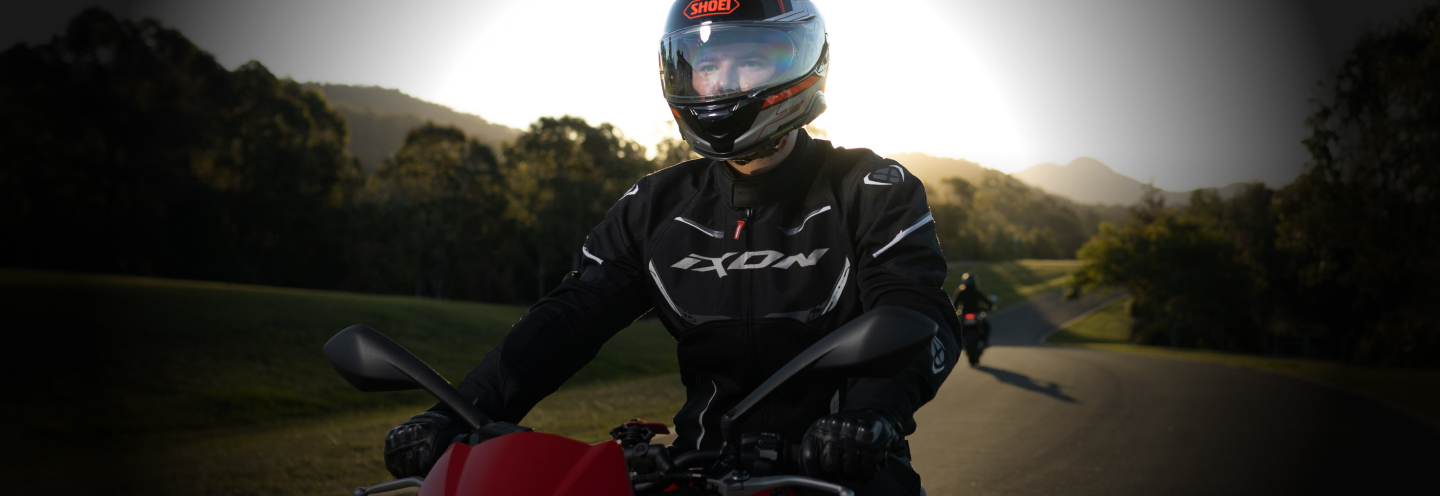How’s your
Ride Craft?
As a rider, your Ride Craft is a combination of your head, your heart and your gut. And, just like your bike, you’ve gotta keep it tuned up. The following tips and tools will help you do just that.
Keeping your Ride Craft in check
Even 2-time World Champions like Casey Stoner understand the importance of keeping their Ride Craft finely tuned. Join Casey as he talks everything Ride Craft and shares why it’s essential to keep it in check.
- Share this:
- Share to Facebook
- Share to Twitter
- Share via Email
VISION: We open on Casey Stoner preparing for a ride. He’s putting on his gear as crew members are mounting a
GoPro camera to Casey’s helmet. While he’s getting ready, Casey explains the aim of the video.
SUPER: Casey Stoner. 2-time World Champion.
CASEY: The best thing we can do, as riders, is to keep our Ride Craft in check.
VISION: At this point we see he’s not at the racetrack, but on a SEQ recreational ride.
The helmet goes on, a crew member declares, “CaseyCam is rolling.”
We then cut to ‘CaseyCam’, where Casey talks to us as he rides.
CASEY: It’s things like — working on perfecting a corner — and being ready for the unexpected…
VISION: We see Casey avoid a goanna in the middle of the road as he rounds a bend.
CASEY: It’s always being mindful of our surroundings,
VISION: We see leaf litter from the rainforest canopy and conditions which can change in a millisecond.
We see him approaching a corner, there’s a wet section of bitumen.
Suddenly, an approaching car is very close to the centre line.
We cut back to Casey as he returns to base. The helmet comes off, he talks to us.
CASEY: Respecting our Ride Craft not only makes us safer — but we end up enjoying our riding even more.
So, how’s your Ride Craft?
SUPER: How’s your Ride Craft?
AUTH STATEMENT: Authorised by the Queensland Government, William Street, Brisbane.
I would like to tune up my
Building on your skills is an important part of your Ride Craft

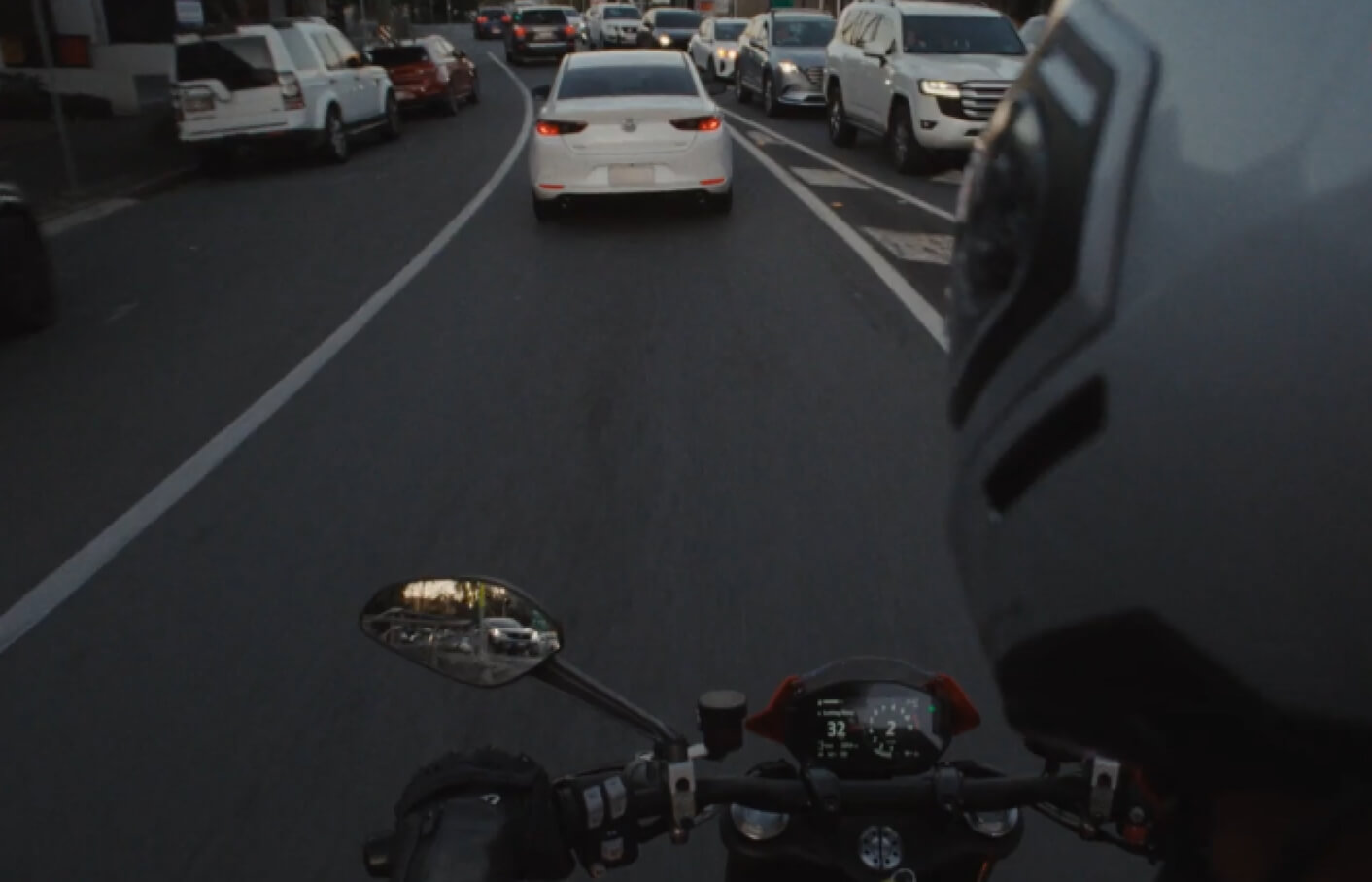

1/3
Tips on cornering
0:15
It’s crucial we ride eyes-up, especially in corners.
TRANSCRIPTNext video

2/3
Tips on urban riding
0:15
- Share this:
- Share to Facebook
- Share to Twitter
- Share via Email
MUSIC: Energetic, rock music.
VISION: We open on a close-up shot of Casey Stoner as he’s talking to camera.
SUPER: Casey Stoner. 2-time World Champion.
CASEY: It’s crucial we ride eyes-up, especially in corners.
VISION: We cut to POV CaseyCam footage of Casey nailing a corner perfectly.
CASEY: We should look, where we want to end up.
Start wide, finish tight.
This makes the corner both safer and more enjoyable.
SUPER: How’s your Ride Craft?
AUTH STATEMENT: Authorised by the Queensland Government, William Street, Brisbane.
2/3
Tips on urban riding
0:15
Urban riding can be intense - so it’s critical we create space between ourselves and other vehicles.
TRANSCRIPTNext video

3/3
Tips on skills
0:15
- Share this:
- Share to Facebook
- Share to Twitter
- Share via Email
MUSIC: Energetic, rock music.
VISION: We open on a close-up shot of Casey Stoner as he’s talking to camera.
SUPER: Casey Stoner. 2-time World Champion.
CASEY: Urban riding can be intense…
VISION: We cut to CaseyCam POV footage of city riding.
CASEY: So it’s critical we create space between ourselves and other vehicles.
VISION: We cut back to Casey.
CASEY: …and stay on top of our speed, so we have time to react.
It’s all part of our Ride Craft.
SUPER: How’s your Ride Craft?
AUTH STATEMENT: Authorised by the Queensland Government, William Street, Brisbane.
3/3
Tips on skills
0:15
When we stay on our skills - we stay on our bikes.
TRANSCRIPT- Share this:
- Share to Facebook
- Share to Twitter
- Share via Email
MUSIC: Energetic, rock music.
VISION: We open on a close-up shot of Casey Stoner as he’s talking to camera.
SUPER: Casey Stoner. 2-time World Champion.
CASEY: When we stay on our skills…
VISION: We cut to CaseyCam POV footage.
CASEY: …we stay on our bikes.
VISION: We cut back to Casey.
CASEY: For some great ways to help build your skills, and enjoy your riding even more, check out
StreetSmarts Ride Craft.
SUPER: How’s your Ride Craft?
AUTH STATEMENT: Authorised by the Queensland Government, William Street, Brisbane.
Riding techniques
The key to good riding technique is smoothness, and the key to
smoothness is good preparation and practicing these skills.

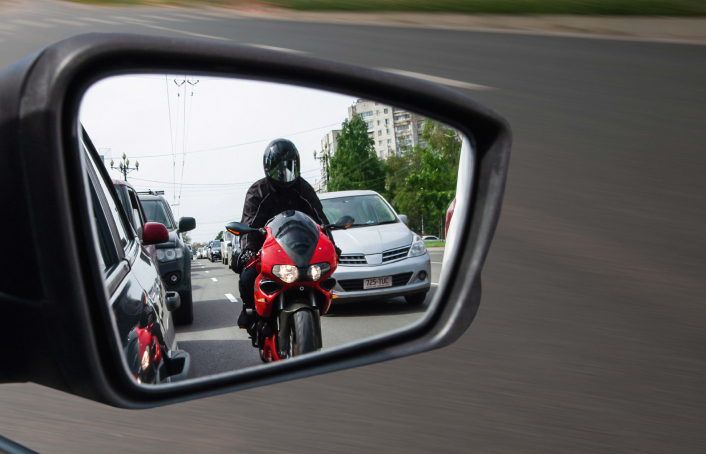
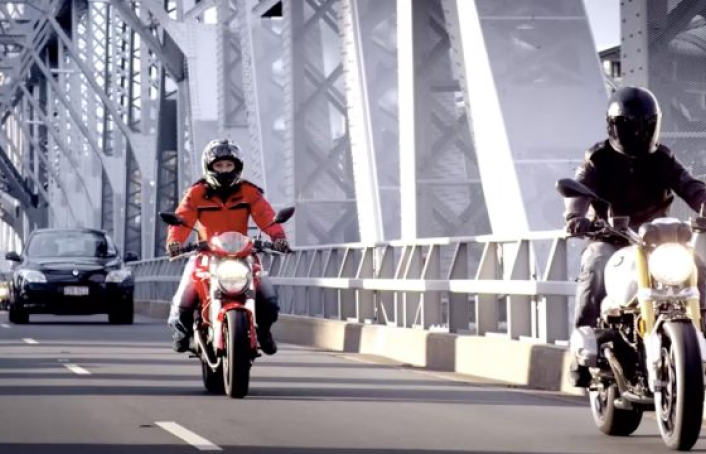


Speed management
Speed management is crucial for skilful riders as riding conditions constantly change. Practicing good speed management significantly reduces your risks of crashing.
You should ride to the conditions and never exceed the posted speed limits. Maintaining a 3-second crash avoidance space gives you enough time to react if something unexpected happens.
Additionally, you should maintain at least 6 seconds of vision ahead and slow down if vision is reduced in situations like blind turnes, crests, busy intersections, or bad weather.
Sharpening observation skills
Traffic and road situations change constantly. That’s why skilful riders are always observing their surroundings.
You can apply good observation with the ‘12, 6, 3’ principle:
- Look 12 seconds ahead to scan your surroundings, observe potential hazards and plan your path
- Maintain at least 6 seconds of vision of the road ahead to give you time to perceive hazards and take action
- Keep a 3 second survival space to give you time to respond and stop if required, to avoid a crash.
Good observation is more than just ‘seeing’, it’s actively scanning for potential hazards and perceiving situations as something that may require action. Doing this can significantly reduce the risk of a crash. Keep your eyes moving, check one area for a few seconds then move your eyes to another area.
Position on the road
Riders should constantly evaluate the road environment to balance space, surface and sight, in order to find the safest road position.
Space: Create buffers between you and potential hazards to increase safety. Constantly adjust your position to maintain space around you.
Surface: Be cautious of road surfaces including paint, oil, water, sand and gravel. Generally, the right wheel track of the lane offers the best surface.
Sight: Maintain a good road position to see and be seen by other motorists. Avoid blind spots and balance maximising space from hazards with the quality of the road surface and the importance of visibility.
Cornering
Cornering requires careful approach and road positioning. You should brake before entering turns, not while riding through them. Managing your speed ensures maximum tire grip and allows for acceleration out of the curve.
For a low-risk line, start your turn wide to improve vision, buffer the head-on zone, and finish the turn tight to ensure correct speed and room for errors. To navigate a series of turnes, link them together by exiting each curve tight, preparing for the next.
Observing the vanishing point helps anticipate changes in the curve. Being aware of road camber helps determine the right speed and lean angle for the curve. Positive camber supports riding, whereas negative camber can work against the rider.
Mastering braking techniques
Correct braking involves two stages, set up and squeeze, and are then gently and gradually released to maintain stability of the motorcycle. Two-stage braking improves braking effectiveness, reduces skidding and provides better control. While harsh or excessive braking may cause skidding, particularly on wet, gravel, or slippery roads.
In emergency situations, close the throttle, apply both brakes with a two-stage approach and pull the clutch just before stopping. Practicing emergency braking in a safe area can help hone skills and prepare for unexpected situations. By mastering braking techniques, experienced riders can ensure safer and more controlled rides.
Being aware of your surroundings and your safety is part of your Ride Craft

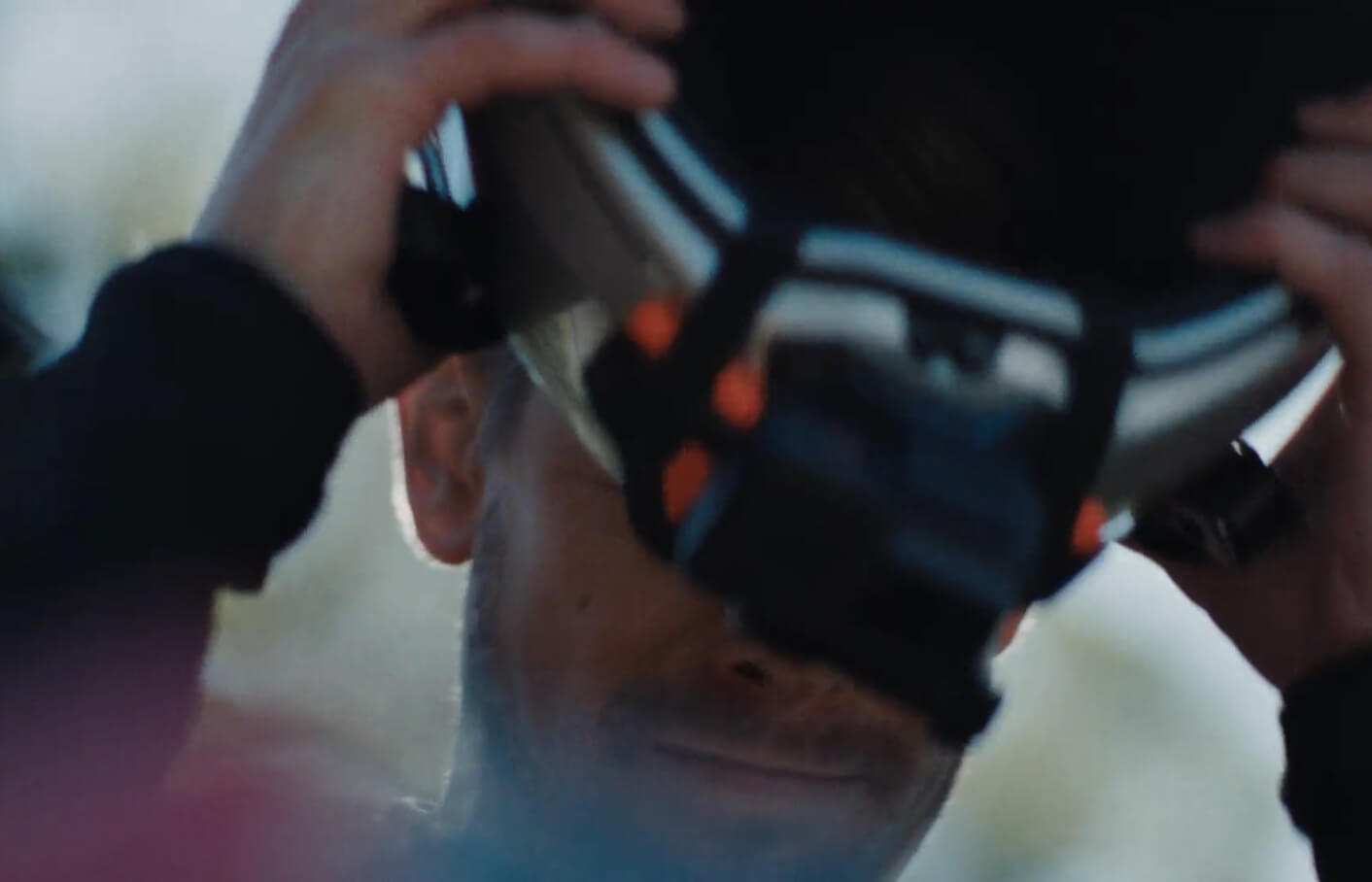

1/3
Tips on safety checks
0:15
Ride Craft begins before we even get on the bike - a quick safety check like this could save you in the long run.
TRANSCRIPTNext video

2/3
Tips on fatigue
0:15
- Share this:
- Share to Facebook
- Share to Twitter
- Share via Email
MUSIC: Energetic, rock music.
VISION: We open on a close-up shot of Casey Stoner as he’s talking to camera.
SUPER: Casey Stoner. 2-time World Champion.
CASEY: Ride Craft begins before we even get on the bike.
VISION: We cut to CaseyCam POV footage of Casey checking his bike.
CASEY: Prior to heading out, check those brakes, tyres, lights and chain.
VISION: We cut back to Casey.
CASEY: A quick safety check like this could save you in the long run.
SUPER: How’s your Ride Craft?
AUTH STATEMENT: Authorised by the Queensland Government, William Street, Brisbane.
2/3
Tips on fatigue
0:15
When we’re fatigued, our safety as riders is severely compromised. So if you’re tired, don’t take the roads — take a break.
TRANSCRIPTNext video

3/3
Tips on riding in the wet
0:15
- Share this:
- Share to Facebook
- Share to Twitter
- Share via Email
MUSIC: Energetic, rock music.
VISION: We open on a close-up shot of Casey Stoner as he’s talking to camera.
SUPER: Casey Stoner. 2-time World Champion.
CASEY: Respecting our Ride Craft sometimes means not riding at all.
VISION: Casey taps his head with his hand.
CASEY: When we’re fatigued, our safety as riders is severely compromised.
So if you’re tired, don’t take the roads — take a break.
SUPER: How’s your Ride Craft?
AUTH STATEMENT: Authorised by the Queensland Government, William Street, Brisbane.
3/3
Tips on riding in the wet
0:15
Rain, hail or shine, all types of weather can impact our riding. Knowing how to adapt to those conditions is a crucial part of our Ride Craft.
TRANSCRIPT- Share this:
- Share to Facebook
- Share to Twitter
- Share via Email
MUSIC: Energetic, rock music.
VISION: We open on a close-up shot of Casey Stoner as he’s talking to camera.
SUPER: Casey Stoner. 2-time World Champion.
CASEY: Rain, hail or shine, all types of weather can impact our riding.
VISION: We cut to CaseyCam POV footage of Casey riding across wet bitumen, then back onto dry.
CASEY: Knowing how to adapt to those conditions is a crucial part of our Ride Craft.
VISION: We cut back to Casey.
CASEY: When we stay on top of the changes, we stay on our bikes.
SUPER: How’s your Ride Craft?
AUTH STATEMENT: Authorised by the Queensland Government, William Street, Brisbane.
Rider awareness
Awareness is more than checking your surroundings.
It’s checking your gear, checking on fellow riders and checking in on yourself.

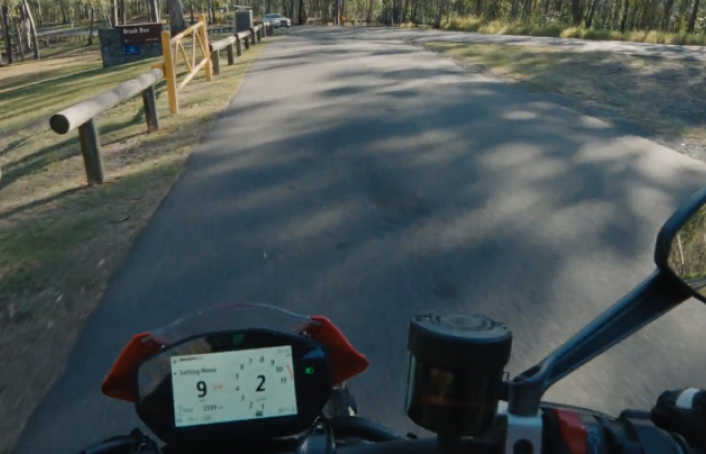
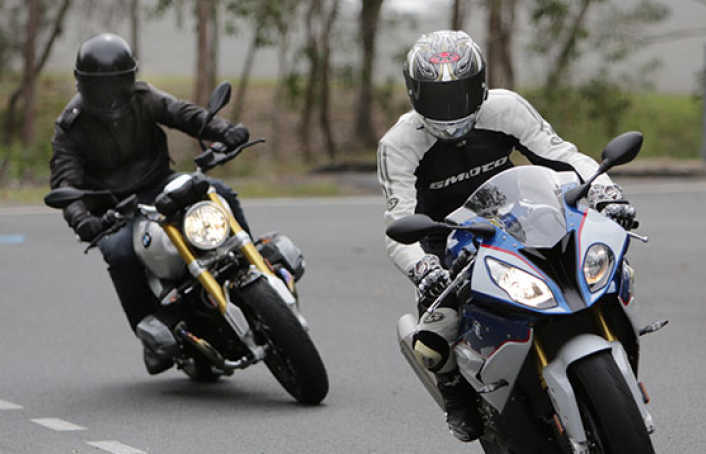


Gear up every time
The right protective gear could make the difference between a nasty fall and injuries that prevent you from ever riding again. The right gear can also enhance your enjoyment and your performance by protecting you from the elements.
Wearing appropriate gear is crucial every time you ride a motorcycle, regardless of the trip’s length or purpose.
Check out MotoCAP to help you choose the safest purpose-made riding gear which suits you.
Fatigue and riding
Riding a motorcycle can be more tiring than driving a car, leading to fatigue. Fatigue affects different aspects of your riding such as your vision, concentration, and balance. It’s important to recognise the signs of fatigue which include arriving at turns too quickly, running wide on turs, rough gear changes, missing signs, a dry mouth or stiff joints and yawning.
To prevent fatigue, stop and rest every 1.5 hours or 150 kilometres. Strategies to avoid fatigue include:
- Getting enough sleep before riding
- Drinking plenty of water
- Limiting coffee and sweet soft drinks
- Eating small, frequent meals with simple foods
- Avoiding fatty foods and large meals
- Staying a little cool while riding
Understanding group riding
Riding in a group can be enjoyable but may also affect your attitude towards risk. To improve safety, ride with people who share your motivations, attitudes and respect your experience level.
For a safer group ride, make sure you:
- Choose a group that respects and protects its members – riding to the least experienced rider’s ability
- Plan ahead to ensure you know where the group is heading and some meeting points – if you get separated
- Ride to your ability and don’t take risks to keep up with the group.
Safety tips for group riding
When riding in a group, choose a position that gives you the best vision of oncoming traffic and hazards.
When you are new to group riding start by riding single file, this formation allows every rider to create space from hazards.
If you’re an experienced group rider you can ride in a staggered formation to allow a clear view of the road ahead.
Carrying a pillion passenger
Carrying a pillion passenger can affect a motorcycle’s handling, stability and acceleration. To improve safety, consider riding without a passenger or only with experienced passengers.
When carrying a pillion, adjust the suspension or tire pressure, increase crash avoidance space, make smooth movements and brief the passenger on proper mounting, holding and leaning techniques.
Keep in mind, when you have a passenger, you’re responsible for their safety too, not just your own.
For more safety tips and other information about riding check out our comprehensive Queensland Motorcycle Riders’ Guide.
More resources for riders

Ride to Zero
Ride to Zero is a new initiative that aims to make Queensland roads safer by bringing riders and the riding community together.

Queensland’s Favourite Rides
Ready to plan your ride? We’ve got you covered with this selection of Queensland’s favourite rides.
